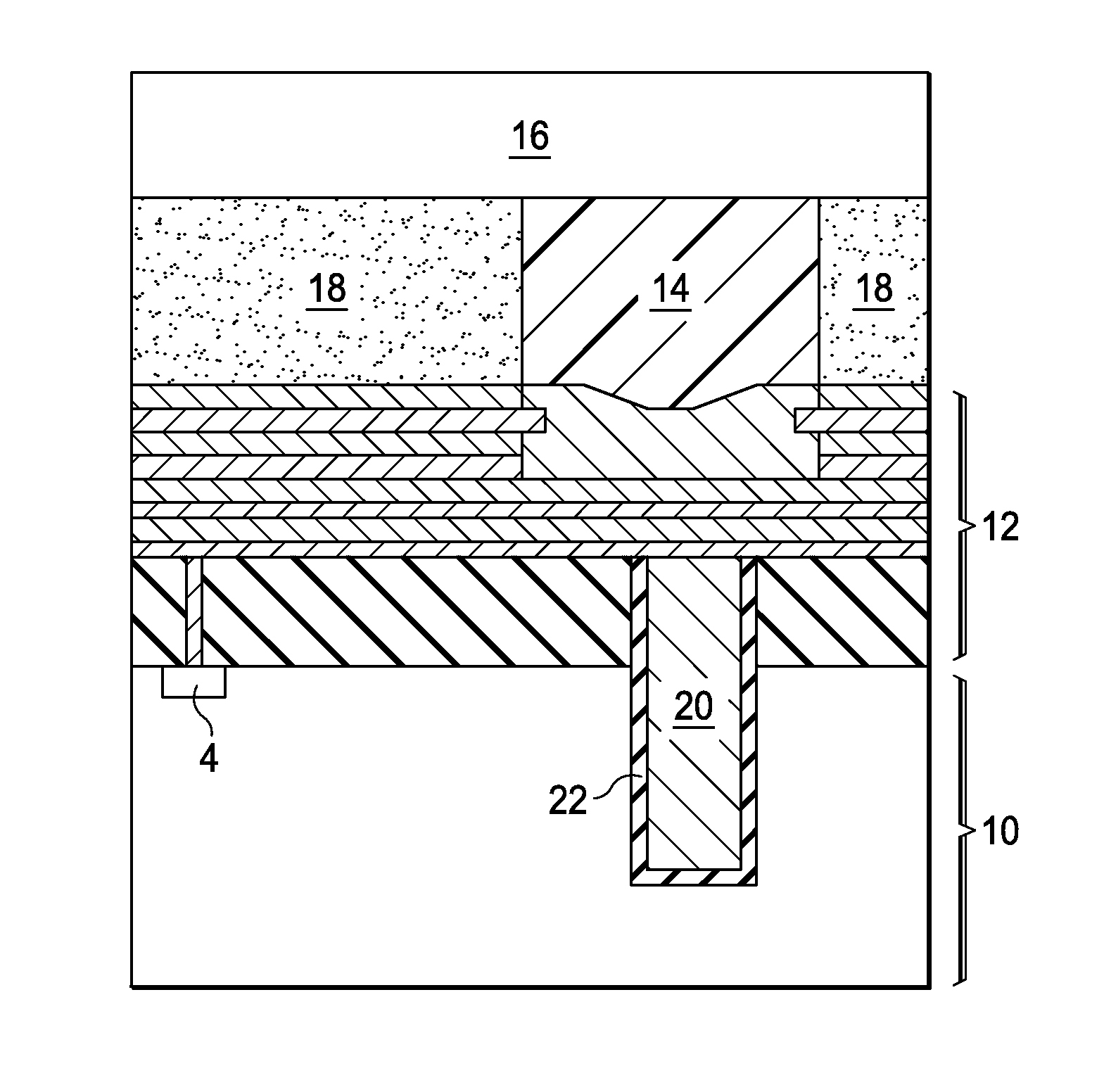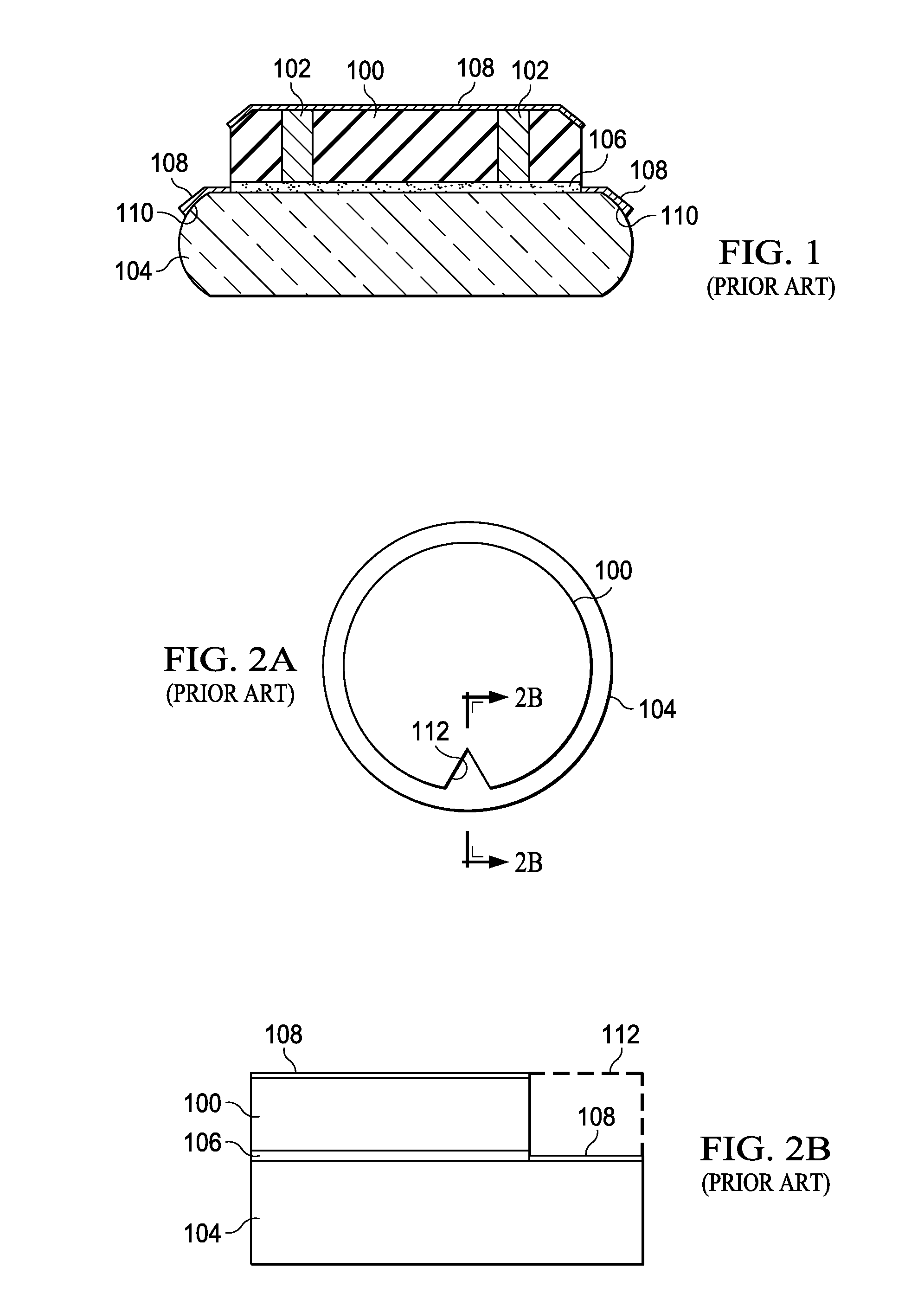Formation of TSV Backside Interconnects by Modifying Carrier Wafers
a backside and interconnect technology, applied in the field of integrated circuit structures, can solve the problems of reducing the size of the component, the minimum size needed to make these components, and the density that can be achieved in two dimensions, so as to improve the ability to secure the carrier wafer, reduce particle generation, and ensure the effect of alignmen
- Summary
- Abstract
- Description
- Claims
- Application Information
AI Technical Summary
Benefits of technology
Problems solved by technology
Method used
Image
Examples
Embodiment Construction
[0018]The making and using of the embodiments of the present invention are discussed in detail below. It should be appreciated, however, that the embodiments provide many applicable inventive concepts that can be embodied in a wide variety of specific contexts. The specific embodiments discussed are merely illustrative of specific ways to make and use the invention, and do not limit the scope of the invention.
[0019]A method for forming a novel backside interconnect structure connecting to through-silicon vias (TSVs, also known as through-semiconductor vias) is provided. The intermediate stages in the manufacturing of an embodiment are illustrated. The variations of the embodiments are discussed. Throughout the various views and illustrative embodiments, like reference numbers are used to designate like elements.
[0020]Referring to FIG. 3A, wafer 2, which includes substrate 10, is provided. Substrate 10 may be a semiconductor substrate, such as a bulk silicon substrate, although it ma...
PUM
 Login to View More
Login to View More Abstract
Description
Claims
Application Information
 Login to View More
Login to View More - R&D
- Intellectual Property
- Life Sciences
- Materials
- Tech Scout
- Unparalleled Data Quality
- Higher Quality Content
- 60% Fewer Hallucinations
Browse by: Latest US Patents, China's latest patents, Technical Efficacy Thesaurus, Application Domain, Technology Topic, Popular Technical Reports.
© 2025 PatSnap. All rights reserved.Legal|Privacy policy|Modern Slavery Act Transparency Statement|Sitemap|About US| Contact US: help@patsnap.com



